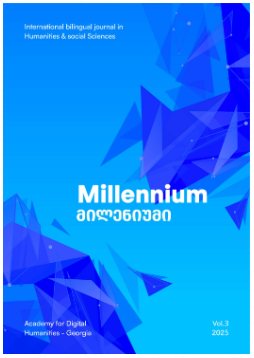New Insights into Split Ergativity in Georgian
Main Article Content
ანოტაცია
This paper offers a thorough analysis of the Georgian type of split ergativity, a typological phenomenon of languages switching between nominative-accusative and ergative-absolutive alignment systems based on grammatical or semantic circumstances. The study describes the main types of split ergativity across languages, drawing on fundamental typological and theoretical literature, especially Robert M. W. Dixon’s (1994) classification of conditioning elements including tense, aspect, person hierarchy, and phrase type. The Georgian language, whose intricate morphological and syntactic structure resists easy binary classification, receives particular attention as a significant example of morphosyntactic alignment variation since it displays several criteria triggering split ergativity such as tense-aspect, verbal class, voice, and control. This paper shows that Georgian is a true example of split ergativity conditioned by overlapping parameters, despite some analyses characterizing it as primarily ergative or active. The debate calls into question long-held beliefs about the function of person-based splits in Georgian that personal pronouns behave differently when it comes to case marking than nouns. This calls for a reconsideration of how person-based alignment is handled. The paper uses empirical data from the largest Georgian language corpus (GNC) to support the analysis, including real-world examples that show how ergative, nominative, and dative case-marking patterns vary among different constructions. In addition to supporting a more complex understanding of Georgian alignment, this corpus-driven approach adds to larger typological and theoretical discussions about the nature of alignment systems and ergativity.
